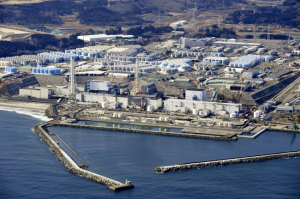Japan has begun discharging treated cooling water from the ruins of the Fukushima nuclear plant into the sea, the operator Tepco said on Thursday, August 24, 2023.

In spite of the opposition from local fishermen, environmentalists and the Chinese government, Tepco dispatched the first batch of treated water into the Pacific Ocean through a special 1-kilometre-long tunnel.
On Tuesday, Japanese Prime Minister, Fumio Kishida, confirmed that the three-decade plan to release the water would kick off on Thursday as a matter that “cannot be postponed’’.
Japan’s nuclear regulatory authority had recently given the green light for the release.
This is according to the International Atomic Energy Agency (IAEA), dumping the water does not pose any danger to humans or the environment.
Japan’s fishing associations, however, feared that the reputation of their products would be further damaged.
China had voiced a strong opposition to the plan and called on Japan to cancel the release of the treated radioactive water planned for discharge on Thursday.
It blasted the beginning of the 30-year discharge plan.
“We have made serious démarches to Japan and asked it to stop this wrongdoing,’’ a spokesperson for China’s Foreign Ministry said in a statement.
“To forcibly start the ocean discharge is an extremely selfish and irresponsible act in disregard of the global public interest,’’ the statement continued.
“Japan has turned itself into a saboteur of the ecological system and polluter of the global marine environment,” the ministry said.
He added that Beijing would take all measures necessary to safeguard food safety and the health of our people.
Beijing had announced weeks ago that it would tighten import regulations for Japanese foodstuffs in the event of a launch of the programme.
Furthermore, the existing import ban on food from 10 Japanese prefectures, including Fukushima, will be maintained, Chinese customs authorities said.
The Fukushima Daiichi nuclear power plant suffered core meltdowns in 2011 as a result of an earthquake and tsunami.
The reactors, though shut down, still have to be cooled with water stored in tanks.
Because they were running out of space, the water was supposed to be piped into the ocean through the built-for-purpose tunnel.
The water was to be filtered and diluted with seawater beforehand.
Disposing of the 1.3 million tonnes of water is expected to take 30 years.
